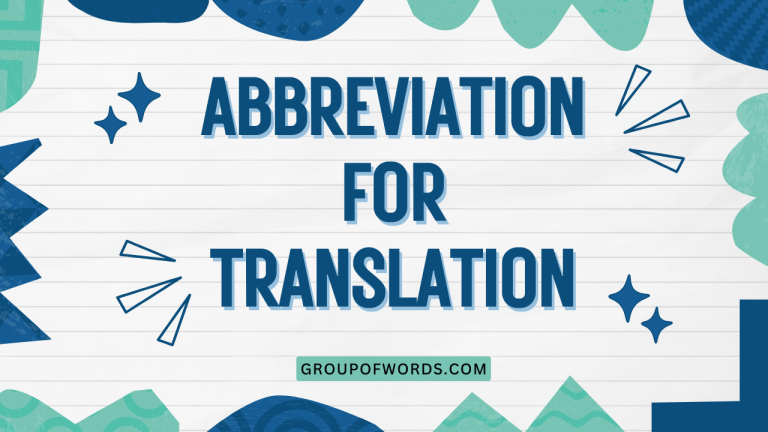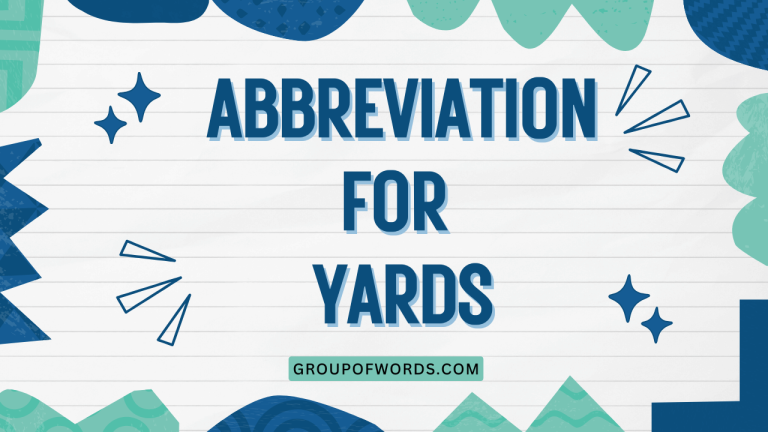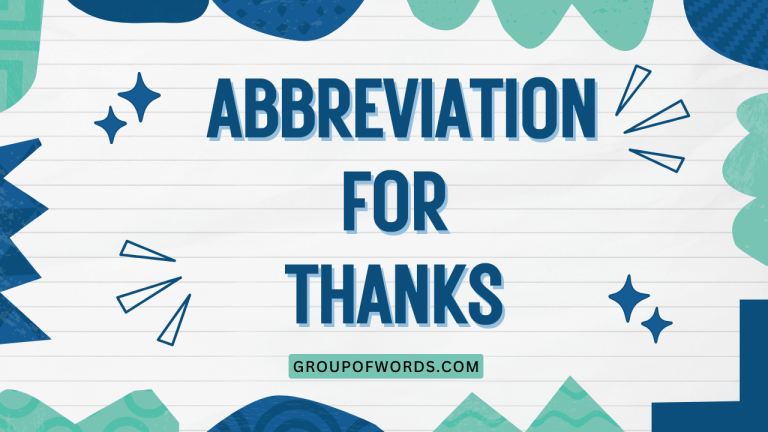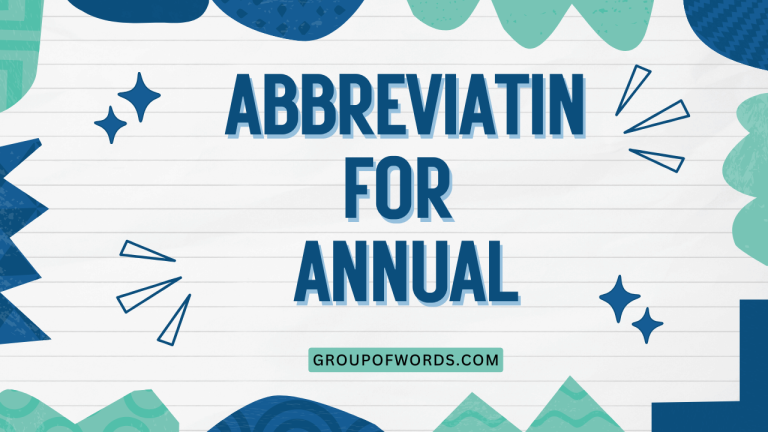“B’fast”: Mastering the Abbreviation for Breakfast
Understanding abbreviations is crucial for efficient communication in English, especially in informal contexts. The abbreviation “b’fast” for “breakfast” is a prime example.
While not universally accepted in formal writing, it’s commonly used in text messages, emails, and social media. This article provides a comprehensive guide to understanding and using “b’fast” correctly, covering its definition, structure, usage rules, common mistakes, and advanced applications.
Whether you’re a beginner or an advanced learner, this guide will equip you with the knowledge to confidently use and interpret this abbreviation in various situations.
This article will benefit English language learners, students, and anyone who wants to improve their understanding of informal English abbreviations. By the end of this guide, you’ll be able to recognize “b’fast” in different contexts, understand its limitations, and avoid common errors.
Table of Contents
- Definition of “B’fast”
- Structural Breakdown
- Types and Categories of Usage
- Examples of “B’fast” in Use
- Usage Rules for “B’fast”
- Common Mistakes with “B’fast”
- Practice Exercises
- Advanced Topics
- Frequently Asked Questions
- Conclusion
Definition of “B’fast”
“B’fast” is an informal abbreviation of the word “breakfast.” It’s primarily used in written communication, especially in digital contexts like text messaging, social media, and informal emails. The abbreviation omits the letters “rea” from the original word.
Its function is to save time and space when typing, contributing to a more concise and rapid exchange of information. It’s important to note that “b’fast” is considered a casual and colloquial abbreviation, and its use is generally restricted to informal settings.
The classification of “b’fast” falls under the category of clipped abbreviations, where a portion of the original word is removed to create a shorter form. The context in which it is used heavily influences its acceptability.
A formal business report would not be an appropriate place for “b’fast,” while a text message to a friend would be perfectly acceptable. Understanding this distinction is crucial for effective communication.
Contexts of Use
The abbreviation “b’fast” is most commonly found in the following contexts:
- Text messages: Quick and informal communication.
- Social media posts: Platforms like Twitter, Facebook, and Instagram.
- Informal emails: Emails to friends, family, or close colleagues.
- Personal notes: Jotting down reminders or grocery lists.
- Online forums and chat rooms: Informal online discussions.
It is generally avoided in:
- Formal writing: Academic papers, business reports, legal documents.
- Professional emails: Emails to superiors or clients.
- Official publications: Newspapers, magazines, and books.
- Presentations: Formal speeches or presentations.
Structural Breakdown
The structure of “b’fast” is quite simple. It’s derived from the word “breakfast” by removing the middle letters “rea.” The apostrophe (‘) indicates the omission of these letters.
There are no variations in the spelling of this abbreviation; it is consistently written as “b’fast.”
The abbreviation follows a common pattern in informal abbreviations, where letters are dropped to create a shorter, more convenient form. This pattern is also seen in other abbreviations like “gov’t” for “government” or “appt” for “appointment.” The key is to maintain enough of the original word to ensure that the meaning remains clear to the reader.
The use of the apostrophe is crucial in “b’fast” because it signals that letters have been omitted. Without the apostrophe, the abbreviation might be misinterpreted or appear incorrect.
The apostrophe helps maintain clarity and indicates that the word is intentionally shortened.
Types and Categories of Usage
While the abbreviation “b’fast” itself doesn’t have different types, its usage can be categorized based on the context and the intent of the speaker or writer. Here are some categories:
Informal Communication
This is the most common category. “B’fast” is used in casual conversations, text messages, and social media posts among friends and family.
The goal is to communicate quickly and efficiently without adhering to formal grammar rules.
Time-Saving
In situations where time is limited, “b’fast” can be used to save a few seconds when typing. This is particularly relevant in fast-paced online environments like chat rooms or instant messaging.
Space-Saving
On platforms with character limits, such as Twitter, “b’fast” can help save valuable space. This allows users to convey more information within the restricted character count.
Stylistic Choice
Sometimes, “b’fast” is used as a stylistic choice to create a more relaxed and informal tone. This can be effective in building rapport with the audience or creating a sense of camaraderie.
Examples of “B’fast” in Use
Here are several examples of how “b’fast” can be used in different contexts. These examples are designed to illustrate the various ways in which this abbreviation can be incorporated into informal communication.
The following examples will demonstrate the abbreviation in various senarios.
Examples in Text Messages
The following table provides examples of how “b’fast” is used in text messages. Text messages are usually informal, making “b’fast” a good fit.
| # | Example Sentence | Context |
|---|---|---|
| 1 | “Hey, grabbing b’fast now. C u later!” | Informing a friend about having breakfast. |
| 2 | “B’fast was amazing this morning! Pancakes!” | Describing a positive breakfast experience. |
| 3 | “Running late, no time for b’fast :(“ | Expressing regret about missing breakfast. |
| 4 | “B’fast at 9 tomorrow?” | Suggesting a time for breakfast. |
| 5 | “Just had b’fast with Sarah. Great catch up!” | Sharing news about having breakfast with someone. |
| 6 | “What did you have for b’fast?” | Asking about someone’s breakfast. |
| 7 | “Need to buy ingredients for b’fast tomorrow.” | Making a note to purchase breakfast items. |
| 8 | “B’fast is served! Come and get it!” | Announcing that breakfast is ready. |
| 9 | “Can’t wait for b’fast tomorrow. I’m starving!” | Expressing anticipation for breakfast. |
| 10 | “Just finished b’fast. Feeling energized!” | Sharing a positive feeling after breakfast. |
| 11 | “B’fast meeting went well.” | Briefly describing the outcome of a breakfast meeting. |
| 12 | “No b’fast today, straight to lunch!” | Skipping breakfast and heading straight to lunch. |
| 13 | “Don’t forget to pack your b’fast!” | Reminding someone to pack their breakfast. |
| 14 | “B’fast date this weekend?” | Suggesting a breakfast date. |
| 15 | “Skipping b’fast to lose weight.” | Sharing a personal decision about skipping breakfast. |
| 16 | “Making a big b’fast spread for everyone.” | Preparing a large breakfast for a group. |
| 17 | “Quick b’fast before heading out.” | Having a quick breakfast before leaving. |
| 18 | “B’fast is my favorite meal of the day!” | Expressing a preference for breakfast. |
| 19 | “Let’s do b’fast at that new cafe.” | Suggesting a location for breakfast. |
| 20 | “Need coffee with my b’fast!” | Expressing the need for coffee with breakfast. |
| 21 | “I woke up late, so I had b’fast in a hurry.” | Describing a rushed breakfast due to waking up late. |
| 22 | “Enjoying a leisurely b’fast on my day off.” | Enjoying a relaxed breakfast during free time. |
| 23 | “B’fast is on me today!” | Offering to pay for someone’s breakfast. |
| 24 | “Trying a new b’fast recipe tomorrow.” | Planning to experiment with a new breakfast recipe. |
| 25 | “B’fast club meeting reminder!” | Reminding members about a breakfast club meeting. |
Examples in Social Media Posts
Social media posts often employ abbreviations to save space and convey messages quickly. Here’s how “b’fast” might appear on different platforms:
| # | Example Sentence | Context |
|---|---|---|
| 1 | “Just had the most amazing b’fast ever! #foodie #breakfastlover” | Sharing a positive breakfast experience with hashtags. |
| 2 | “No time for b’fast this morning. Hustling! #morninggrind” | Expressing a lack of time for breakfast due to work. |
| 3 | “B’fast goals! Avocado toast and a smoothie. #healthyfood #breakfast” | Sharing a picture of a healthy breakfast. |
| 4 | “Who else loves a good b’fast burrito? #breakfastburrito #foodporn” | Asking for opinions on breakfast burritos. |
| 5 | “B’fast with a view! #travel #breakfasttime” | Sharing a photo of breakfast with a scenic backdrop. |
| 6 | “Started my day with a delicious b’fast. #goodmorning #breakfastclub” | Sharing a morning greeting with a breakfast photo. |
| 7 | “B’fast is the most important meal of the day! #healthylifestyle #breakfastideas” | Promoting the importance of breakfast. |
| 8 | “Late b’fast today. Sleeping in was worth it! #lazyday #breakfastinbed” | Sharing a late breakfast experience. |
| 9 | “B’fast inspiration: Oatmeal with berries and nuts. #breakfastrecipes #healthy” | Providing breakfast recipe inspiration. |
| 10 | “Having a quick b’fast before heading to work. #busymorning #breakfastontherun” | Sharing a quick breakfast routine. |
| 11 | “B’fast at my favorite local cafe! #supportlocal #breakfastspot” | Promoting a local cafe with a breakfast photo. |
| 12 | “Trying out a new b’fast place this morning! #foodadventure #breakfastlover” | Documenting a new breakfast experience. |
| 13 | “B’fast is life! #breakfastobsessed #foodiegram” | Expressing a strong love for breakfast. |
| 14 | “Making a special b’fast for my family. #familytime #breakfastlove” | Sharing a family breakfast moment. |
| 15 | “Post-workout b’fast! Protein shake and eggs. #fitness #breakfastfuel” | Sharing a post-workout breakfast routine. |
| 16 | “B’fast is served! Who’s hungry? #breakfastbuffet #foodlover” | Announcing the availability of breakfast. |
| 17 | “Starting my day right with a healthy b’fast. #wellness #breakfastideas” | Promoting a healthy breakfast lifestyle. |
| 18 | “B’fast date with my bestie! #friendshipgoals #breakfasttime” | Sharing a breakfast date with a friend. |
| 19 | “B’fast of champions! Pancakes and bacon. #cheatmeal #breakfast” | Sharing an indulgent breakfast meal. |
| 20 | “Rainy day b’fast vibes. Coffee and a book. #cozymorning #breakfast” | Sharing a cozy breakfast experience. |
| 21 | “B’fast on the go! Energy bar and coffee. #busylife #breakfastonthego” | Sharing a quick breakfast while traveling. |
| 22 | “Homemade b’fast always hits the spot! #cooking #breakfastrecipes” | Sharing the satisfaction of homemade breakfast. |
| 23 | “B’fast is the best way to start the day! #motivation #breakfastlover” | Promoting breakfast as a motivational start to the day. |
| 24 | “Missing my b’fast routine while traveling. #travelproblems #breakfast” | Expressing nostalgia for a regular breakfast routine. |
| 25 | “B’fast prep for the week! Meal prepping made easy. #mealprep #breakfast” | Sharing a meal prep routine for breakfasts. |
Examples in Informal Emails
In informal emails, “b’fast” can be used to maintain a casual and friendly tone. However, it’s important to consider the recipient and the overall context of the email.
| # | Example Sentence | Context |
|---|---|---|
| 1 | “Hey John, just wanted to see if you’re free for b’fast next week?” | Suggesting a breakfast meeting to a colleague or friend. |
| 2 | “Hi Emily, I had a great b’fast this morning and thought of you!” | Sharing a pleasant breakfast experience with a friend. |
| 3 | “Hey team, quick reminder about the b’fast meeting tomorrow at 8 AM.” | Reminding a team about a breakfast meeting. |
| 4 | “Hi Sarah, let’s catch up for b’fast soon!” | Suggesting a breakfast get-together. |
| 5 | “Hey Mark, just wanted to know what you had for b’fast today!” | Making casual conversation about breakfast. |
| 6 | “Hi Lisa, I’m running late, so I’ll grab b’fast on the go.” | Explaining why you’re having a quick breakfast. |
| 7 | “Hey David, I’m making a big b’fast this weekend. Wanna join?” | Inviting someone to a weekend breakfast. |
| 8 | “Hi Karen, I tried that new b’fast recipe you recommended. It was delicious!” | Sharing feedback on a breakfast recipe. |
| 9 | “Hey everyone, quick update: b’fast will be served at 9 AM tomorrow.” | Announcing breakfast arrangements to a group. |
| 10 | “Hi Tom, I’m skipping b’fast today. Too much work to do!” | Explaining why you’re skipping breakfast. |
| 11 | “Hey Maria, Just wanted to check if you’re still up for b’fast tomorrow? “ | Confirming a breakfast appointment. |
| 12 | “Hi Ben, I was thinking of trying that new cafe for b’fast. Interested?” | Suggesting a new breakfast spot. |
| 13 | “Hey Susan, I had the best b’fast sandwich ever this morning!” | Sharing excitement about a breakfast meal. |
| 14 | “Hi Mike, Don’t forget, we have that b’fast meeting with the new client next week.” | Reminding about an important breakfast meeting. |
| 15 | “Hey Jessica, I’m making pancakes for b’fast. Come over if you’re free!” | Inviting someone over for breakfast. |
| 16 | “Hi Robert, I’m running super late today, so no time for b’fast. See you later! “ | Explaining a rushed morning. |
| 17 | “Hi Amanda, Let’s plan a b’fast date soon! I miss our chats.” | Suggesting a breakfast date to catch up. |
| 18 | “Hi Peter, I found a great b’fast deal at the local diner. Thought you’d like to know.” | Sharing a breakfast deal. |
| 19 | “Hi Olivia, I’m experimenting with a new b’fast smoothie recipe! “ | Sharing a new recipe experiment. |
| 20 | “Hi Kevin, Just a friendly reminder that b’fast is included in our hotel package.” | Reminding about included breakfast at a hotel. |
| 21 | “Hey Nicole, I had a healthy b’fast this morning and feel so much more energized!” | Sharing the benefits of a healthy breakfast. |
| 22 | “Hi George, I’m thinking of starting a b’fast club at work. What do you think?” | Suggesting a new club idea. |
| 23 | “Hey Tanya, Let’s treat ourselves to a fancy b’fast this weekend!” | Suggesting a special breakfast outing. |
| 24 | “Hi William, I’m trying to cut back on carbs, so I had a light b’fast today.” | Sharing dietary choices. |
| 25 | “Hey Samantha, I’m prepping all my b’fast meals for the week to save time!” | Sharing meal prep strategies. |
Usage Rules for “B’fast”
The primary rule for using “b’fast” is to reserve it for informal contexts. Avoid using it in formal writing, professional emails, or any situation where a relaxed tone is not appropriate.
Consider your audience and the purpose of your communication before using this abbreviation.
Consistency is also important. If you choose to use “b’fast” in a particular conversation or document, stick with it throughout.
Avoid mixing “b’fast” with the full word “breakfast” unless there is a specific reason to do so. For instance, if you want to emphasize the importance of the meal or provide a more formal description, you might use “breakfast” instead of “b’fast.”
While “b’fast” is generally understood, there’s always a chance that some people may not recognize it, especially if they are not familiar with informal abbreviations. In such cases, it’s best to use the full word “breakfast” to ensure clarity.
When in doubt, err on the side of formality.
Exceptions and Special Cases
There are very few exceptions to the rule of using “b’fast” only in informal contexts. However, one possible exception might be in creative writing, where the use of informal abbreviations could be used to create a specific effect or to reflect the voice of a particular character.
In such cases, the use of “b’fast” would be a deliberate stylistic choice rather than a grammatical error.
Another special case might be in internal communications within a company or organization where informal abbreviations are commonly used. If the company culture embraces casual communication, “b’fast” might be acceptable in internal emails or memos.
However, it’s still important to avoid using it in external communications or formal documents.
Common Mistakes with “B’fast”
One of the most common mistakes is using “b’fast” in formal writing. This can make your writing appear unprofessional and careless.
Always use the full word “breakfast” in academic papers, business reports, and other formal documents.
Another mistake is omitting the apostrophe. Without the apostrophe, “b’fast” becomes “bfast,” which is not a recognized abbreviation and may be confusing to readers.
Always include the apostrophe to indicate the omission of letters.
Overusing “b’fast” can also be a mistake. Even in informal contexts, excessive use of abbreviations can make your writing difficult to read and understand.
Use “b’fast” sparingly and only when it adds value to your communication.
| Incorrect | Correct | Explanation |
|---|---|---|
| “The bfast meeting is scheduled for 9 AM.” | “The breakfast meeting is scheduled for 9 AM.” | Using “breakfast” in a formal context. |
| “bfast was delicious!” | “B’fast was delicious!” | Including the apostrophe to indicate omission. |
| “I had b’fast, then went to b’fast club, then talked about b’fast all day.” | “I had b’fast, then went to breakfast club, then talked about breakfast all day.” | Avoiding overuse of the abbreviation. |
| “I’m having b fast now.” | “I’m having b’fast now.” | Correct spacing and apostrophe usage. |
| “Bfast is important.” | “B’fast is important.” | Correct abbreviation with apostrophe. |
Practice Exercises
Test your understanding of “b’fast” with these practice exercises. Choose the correct sentence in each question.
| # | Question | Correct Answer |
|---|---|---|
| 1 | Which sentence is correct?
|
2. “I had b’fast this morning.” |
| 2 | Which sentence is more appropriate for a formal email?
|
2. “Let’s schedule a breakfast meeting.” |
| 3 | Which sentence is correct?
|
1. “B’fast is my favorite meal.” |
| 4 | Which sentence is more appropriate for a text message?
|
2. “I’m having b’fast now.” |
| 5 | Which sentence is correct?
|
2. “B’fast was great!” |
| 6 | Which of the following is the correct abbreviation for “breakfast”?
|
2. B’fast |
| 7 | In which context is “b’fast” most appropriate?
|
2. A text message to a friend |
| 8 | Which sentence uses “b’fast” correctly?
|
2. The company offers complimentary breakfast. |
| 9 | Choose the correct sentence:
|
1. I had b’fast and coffee. |
| 10 | Which is the best way to write this for a formal setting?
|
2. Our breakfast meeting is tomorrow. |
Advanced Topics
For advanced learners, it’s important to understand the broader context of abbreviations in English. “B’fast” is just one example of a wide range of abbreviations used in informal communication.
Understanding the principles behind abbreviation formation can help you decipher new abbreviations and use them effectively.
Another advanced topic is the evolution of abbreviations in the digital age. With the rise of social media and instant messaging, new abbreviations are constantly emerging.
Staying up-to-date with these trends requires continuous learning and a willingness to adapt to changing language norms.
Finally, it’s important to consider the cultural and regional variations in abbreviation usage. Some abbreviations may be more common in certain regions or among specific groups of people.
Being aware of these variations can help you avoid misunderstandings and communicate more effectively with diverse audiences.
Frequently Asked Questions
- Is “b’fast” a universally accepted abbreviation?
No, “b’fast” is not universally accepted. It is considered an informal abbreviation and is primarily used in casual communication, such as text messages, social media, and informal emails. It should be avoided in formal writing and professional contexts.
- What does the apostrophe in “b’fast” signify?
The apostrophe in “b’fast” signifies the omission of letters from the original word “breakfast.” In this case, the letters “rea” have been removed to create the shorter abbreviation.
- Can I use “b’fast” in a business email?
It is generally not recommended to use “b’fast” in a business email, especially when communicating with superiors, clients, or individuals outside your immediate team. Using the full word “breakfast” is more professional and appropriate in such contexts.
- Are there any alternative abbreviations for “breakfast”?
While “b’fast” is a common abbreviation, other less frequent alternatives might include “brkfast” or “brekkie” (though brekkie is more of a colloquial term than a true abbreviation). However, “b’fast” is the most widely recognized abbreviated form.
- How can I remember when to use “b’fast” vs. “breakfast”?
A simple rule of thumb is to use “b’fast” in informal settings and “breakfast” in formal settings. If you’re unsure, it’s always best to err on the side of formality and use the full word.
- Is it ever appropriate to use “b’fast” in academic writing?
No, it is generally not appropriate to use “b’fast” in academic writing. Academic writing requires a formal and professional tone, and abbreviations like “b’fast” are considered too informal for this context.
- What should I do if someone doesn’t understand my use of “b’fast”?
If you’re communicating with someone who doesn’t understand “b’fast,” simply clarify by explaining that it’s an abbreviation for “breakfast.” In future communications with that person, it may be best to use the full word to avoid confusion.
- Can “b’fast” be used in spoken English?
While “b’fast” is primarily a written abbreviation, it is uncommon and generally not recommended for spoken English. In spoken conversation, it’s better to say the full word “breakfast” or use the colloquial term “brekkie,” which is more commonly accepted in some regions.
Conclusion
Understanding and using abbreviations like “b’fast” is an important aspect of mastering informal English communication. While it’s crucial to recognize its limitations and avoid using it in formal contexts, “b’fast” can be a valuable tool for quick and efficient communication in casual settings.
By following the guidelines and examples provided in this article, you can confidently use and interpret “b’fast” in various situations.
Remember to always consider your audience and the purpose of your communication when deciding whether to use “b’fast” or the full word “breakfast.” With practice and attention to detail, you can master the art of using abbreviations effectively and enhance your overall communication skills. Keep practicing, and you’ll soon be a pro at navigating the nuances of English abbreviations.






